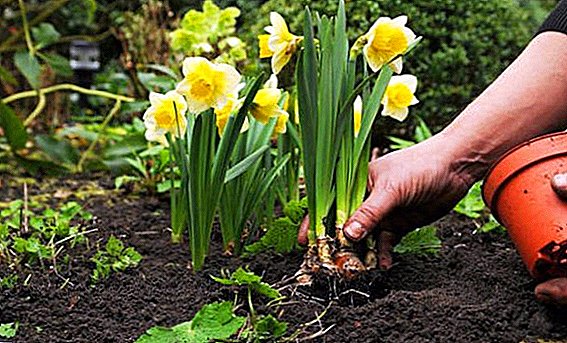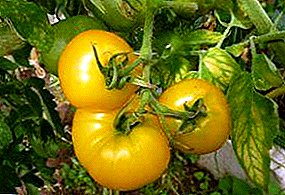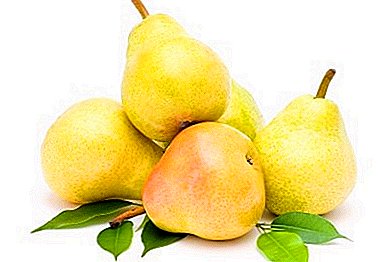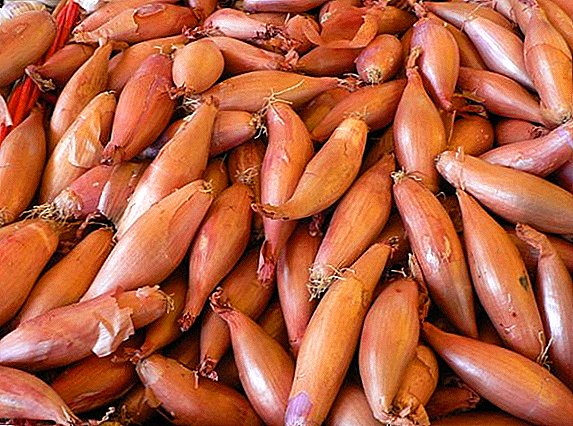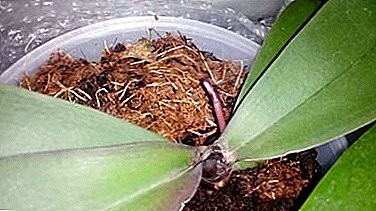
A sufficient number of well-developed adult leaves is an indispensable condition for the timely and abundant flowering of any orchid.
The vegetative development of the representatives of this family occurs in the apical part of the socket, called the growth point, and becomes impossible if it is damaged or completely absent. However, the complete absence of a growth point is not a sentence for the plant.
What it is?
The orchid growth point is the apical part of the plant, providing new shoots, axillary roots and flower buds.
Appearance and location
What does a growth point look like and what is it? This vegetative part is located in the sinus between the upper leaves of the rosette. During the active growing season, the growth point looks like young shoots of light green color located at the top of the rosette.
A photo
Further on the photo you will see what the growth point of a flower looks like:

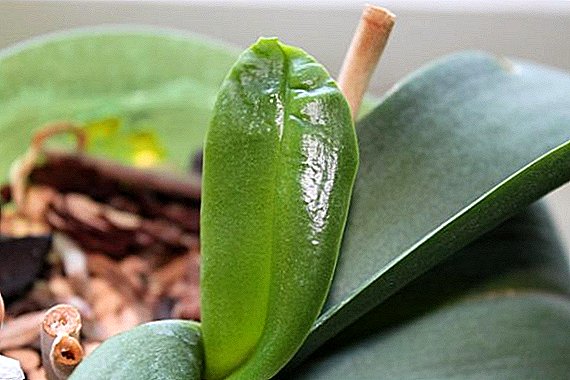

Functions
Most often in the conditions of home greenhouse contains orchid monopodial type (phalaenopsis or Wanda), characterized by the presence of one growth point. The leaves of these orchids are formed alternately, occupying an opposing position and forming a rosette.
During the vegetative activity of the plant, the growing point continuously produces new leaves, as well as the necessary axial roots for the full nutrition of the orchid.
From the interstitial space of fresh sheets appear and flower stalks. In case of loss or damage to the apical point of the plant, the orchid stops growing, and in some cases completely dies without this part.
Is there a plant without a top?
Are there plants without a top and what to do when they find a problem? Orchids without this vegetative part does not exist. Nevertheless, representatives of the family with a damaged or completely lost growth point are often found. In the presence of such cases, you can save the plant from death, as well as hope for its further development and the appearance of peduncles. Let us examine in more detail.
Signs of absence
The absence of a growth point in an orchid can be judged by the following external features:
- Apical part of the plant completely absent, and in its place is the healed “stump”.
- Upper sinuses affected by rot or fungus.
- Upper leaves orchids dry up or turn yellow, and new growth is not observed.
The reasons
 After the discovery of the above symptoms, it is necessary to identify the cause of the problem. As a rule, the growth point can be damaged or completely lost as a result of:
After the discovery of the above symptoms, it is necessary to identify the cause of the problem. As a rule, the growth point can be damaged or completely lost as a result of:
- Sunburncapable of damaging delicate apical shoots and buds.
- Mechanical damage (for example, as a result of falling pots with a plant).
- Rotting. As a rule, rotting at the growth point is associated with a long and regular stagnation of moisture in the leaf axils.
- Fungal or bacterial lesions, the beginning of which can be connected both with violation of the conditions of orchid maintenance, and with their presence already at the moment of buying a new plant.
- Cylindersi.e. emergence of a peduncle from the very top of the outlet where the point of growth should be located (as a rule, it is observed in imported Dutch specimens). In this case, it remains to try to stimulate the emergence of a new growth point by treating fresh kidneys with hormonal preparations.
The absence or damage to the growth point is not always a sentence for members of the orchid family due to their natural vitality. Therefore, finding problems with a green pet, you should try to eliminate them in all possible ways.
What if there is no basis for shoots?
No apparent reason
If there is no visible damage in the rosette apex area, but the lack of growth in the plant at the height of the growing season suggests problems with the growing point, you should try to change the conditions of the plant:
- Adjust lighting mode (organize lighting, change pot locations).
- Change the watering modeby bathing the plant in warm water as the soil dries out.
- Try to “cheer up” the orchid arranging her bathing in a hot shower or a short period of artificial wintering in the cold (not lower than 10 ° С).
Leaves die or there is mechanical damage.
 If damage to the growth point is not obvious, but the leaves adjacent to it die or have already died, remove them with a sharp knife and sprinkle the sections with a powdered activated carbon tablet or cinnamon for disinfection.
If damage to the growth point is not obvious, but the leaves adjacent to it die or have already died, remove them with a sharp knife and sprinkle the sections with a powdered activated carbon tablet or cinnamon for disinfection.
Most likely, after the orchid is freed from the affected parts and the containment factor that has led to their loss, it begins to grow, pleased with new leaves, and soon the laying of flower stalks.
Similar actions should be taken in the case of mechanical damage to the plant and the subsequent long stop in development. Coarse scars in the growth point area are carefully cut off. and processed disinfectant composition. After this operation, the plant should form a new growth point and continue to grow in the normal mode.
Before cutting off any parts of the orchid, it is necessary to thoroughly disinfect the instrument by dipping it in boiling water or holding it over hot steam. Wiping the knife with medical alcohol or other alcohol-containing antiseptic composition is also suitable.
Plant rots
The most common cause of damage to the growth point of orchids is its rotting as a result of improper watering.
Orchids do not tolerate prolonged stagnation of water in the axils of the leaves, instantly responding to excessive moisture rot. Tender young shoots at the top of the outlet are particularly susceptible to this process.
If the moisture regime was violated, and the growth point began to rot, it is necessary:
- Completely remove the damaged parts of the plant with a sharp knife (if the rot has spread deep into the sheet rosette, the affected area must be cut out completely to the healthy green part, otherwise the rotting process will continue and the orchid will die).
 Slices should be treated with a special antiseptic composition (in its absence, crushed activated carbon, ground cinnamon, as well as a solution of brilliant green or iodine will do).
Slices should be treated with a special antiseptic composition (in its absence, crushed activated carbon, ground cinnamon, as well as a solution of brilliant green or iodine will do).- Wait until the cut areas are completely dry.
- Treat the plant and the soil around it with a specialized copper-containing preparation (for example, Brodsky liquid).
- The disinfection procedure must be repeated 2-3 times with an interval of 15 days.
If orchid damage was caused by black rot, it is almost impossible to cure the plant. Moreover, this type of disease is extremely dangerous for neighboring plants with the affected specimen. Therefore, the most reasonable action when detecting black rot on an orchid will be its complete removal from the collection, as well as the treatment of green “neighbors” with copper-containing preparations for the purpose of prevention.
If the above measures have helped stop the process of decay, it is necessary to provide the plant with optimal conditions for keeping and regularly check it for re-decay. A fully healed orchid with 80% probability will form a new growth point and will continue to develop normally, and eventually blossom.
We offer to watch a video about rotting growth point in orchids:
There are fungal diseases
If the cause of the growth point is a fungal disease, you should:
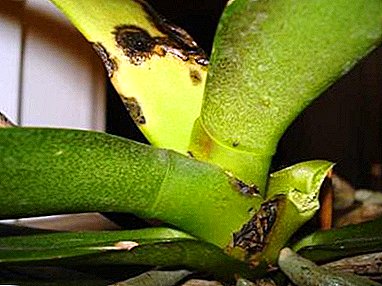 Carefully inspect the plant for the presence of all lesions of the fungus.
Carefully inspect the plant for the presence of all lesions of the fungus.- Remove affected areas up to the healthy green part of the plant.
- Sprinkle the sections with a disinfectant composition and let them dry.
- Treat the entire plant and the soil in his pot with a solution of 0.2% Fundazol, Topsin or other specialized antifungal agent suitable for orchids.
- Twice repeat processing with an interval of 10-14 days.
- Carefully observe the possible emergence of new lesions.
If the fungus is identified even before the majority of the vegetative mass of the plant is lost and completely destroyed, orchid has all chances to continue to grow actively and delight the appearance of fresh peduncles.
Even in case of serious damage, the orchid is able to restore the growing point, forming it in the place of dormant peduncles or hilar buds, so you should not immediately write off a plant that has suffered from the disease and is stunted. Stimulate the transformation of the kidneys will help special hormonal drugs, for example, cytokinin paste.
Prevention
The best prevention of damage to the growth point of an orchid is to organize the proper care of the plant from the first minute of its appearance in the flower collection. The same recommendations are effective for the rehabilitation of successfully treated plants with a damaged growth point.
So, for the cultivation of orchids in the conditions of the house it is necessary:
- Locate the plant on the western or eastern sill. In the absence of such an opportunity to organize additional shadowing on the south or artificial lighting on the north window.
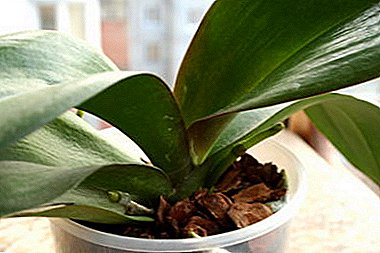 Observe the correct temperature regime: during the growing season, a temperature of 22 degrees is necessary, while during rest time the content is cooler, but not falling below 10 ° C.
Observe the correct temperature regime: during the growing season, a temperature of 22 degrees is necessary, while during rest time the content is cooler, but not falling below 10 ° C.- Protect the plant from drafts (including from the air conditioner).
- Maintain a humidity regime in the range of 50-60% by regular spraying, as well as ensuring the protection of the plant from rising air near the radiator.
- Water the orchid every 7-10 by dipping the pots in warm water for 15-30 minutes.
In between “bathing” the soil in the pot should completely dry out.
- If after irrigation of the ground part of the plant from the spray gun, the moisture in the sinuses does not dry out for more than 30 minutes, it is necessary to collect it with the help of a cosmetic disk or a cotton swab.
- Regularly (but not earlier than 1-2 months after treatment or transplant) to apply specialized mineral fertilizers.
The orchid is considered a whimsical and capricious plant. Nevertheless, this statement is true only for the organization of conditions suitable for its flowering. In general, orchids have a high degree of vitality and can even recover with a complete loss of the growing point. and give your owner a new chance to tame and contemplate fresh buds.


 Slices should be treated with a special antiseptic composition (in its absence, crushed activated carbon, ground cinnamon, as well as a solution of brilliant green or iodine will do).
Slices should be treated with a special antiseptic composition (in its absence, crushed activated carbon, ground cinnamon, as well as a solution of brilliant green or iodine will do). Carefully inspect the plant for the presence of all lesions of the fungus.
Carefully inspect the plant for the presence of all lesions of the fungus. Observe the correct temperature regime: during the growing season, a temperature of 22 degrees is necessary, while during rest time the content is cooler, but not falling below 10 ° C.
Observe the correct temperature regime: during the growing season, a temperature of 22 degrees is necessary, while during rest time the content is cooler, but not falling below 10 ° C.